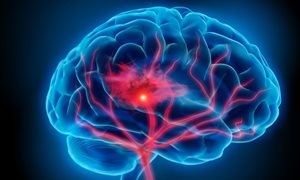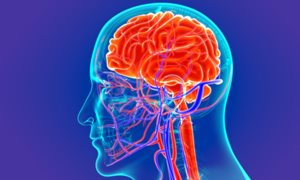
The use of lipids to attenuate co-morbidities of obesity may sound paradoxical. However, it has shown to be particularly relevant in the fight against a less familiar co-morbidity of obesity, particularly neurological changes. Obesity induces alterations in white matter tracks, neuroinflammation and increases the risk of dementia.
A specific lipid structure, Milk Fat globule membrane (MFGM), which is available in mammalian milk, has shown to attenuate obesity-induced neurological changes in rodents. In more detail, post-doc dr. Ilse Arnoldussen in the research group Translational Neuroanatomy of professor Kiliaan examined if the addition of whey protein lipid concentrate to a high fat diet could diminish the neurological changes, which are normally induced by this energy rich diet. Whey protein lipid concentrate contains high levels of milk fat globule membrane and highly available in mammalian milk.
Funded by the EFRO BRITEN project and in strong cooperation with Metabolic health research TNO Leiden and Medical and Scientific Affairs, Reckitt Mead Johnson Nutrition Institute (Scientific team below), the team found that supplementation with this lipid structure significantly attenuated obesity induced changes in functional connectivity and contributed to anti-inflammatory processes in the brains of the obese mice. These results might indicate a candidate for nutritional interventions to improve metabolic health in obesity and its neurological co-morbidities. Recently, these findings were published in the International Journal of Obesity, on October 29th 2021.
At the moment, the research group of Amanda Kiliaan, along with research group Metabolic Health TNO Leiden (Robert Kleemann), started two new studies. In the first new study, effects of exercise is examined on brain health in obese mice. The second study, a collaboration between TNO, Donders Rijnstate Hospital, and Neuroanatomy Radboudumc, effects of weight-loss on cognition in morbid obese persons (BARICO study) are being studied.
Publication
Arnoldussen, I. A. C., Morrison, M. C., Wiesmann, M., van Diepen, J. A., Worms, N., Voskuilen, M., . . . Kiliaan, A. J. (2021). Milk fat globule membrane attenuates high fat diet-induced neuropathological changes in obese Ldlr−/−.Leiden mice. International Journal of Obesity. doi:10.1038/s41366-021-00998-w
Related news items

Early stage biomarker for Alzheimer's disease
4 November 2021 Researchers from the translational metabolic lab and department of neurology, in collaboration with researchers from University of Barcelona, set out to research a new biomarker in cerebrospinal fluid called “neuroleukin” for Alzheimer's disease. go to page
Palliative care for people with Parkinson’s Disease and their family Caregivers Current state of affairs
7 October 2021 Advanced stage Parkinson’s disease can cause a variety of symptoms, for which palliative care can be beneficial, though research from the point of view of patients in later stages is still rare. Radboudumc researchers therefore placed their patients perspectives at the center of their recent study. go to page
Radboudumc to lead research team into tackling future pandemics NWO funds complexity research on pandemics
5 August 2021 The Radboudumc is going to lead a study on how to deal with future pandemics, together with Radboud University and the University of Amsterdam. Rick Quax from the Informatics Institute/IAS is involved in this project. go to page
Treatment of brain diseases at risk if neuroscientists can no longer conduct their research
5 August 2021 In order to treat brain diseases such as depression, Alzheimer's or ADHD, more research into the brain is needed. go to page

